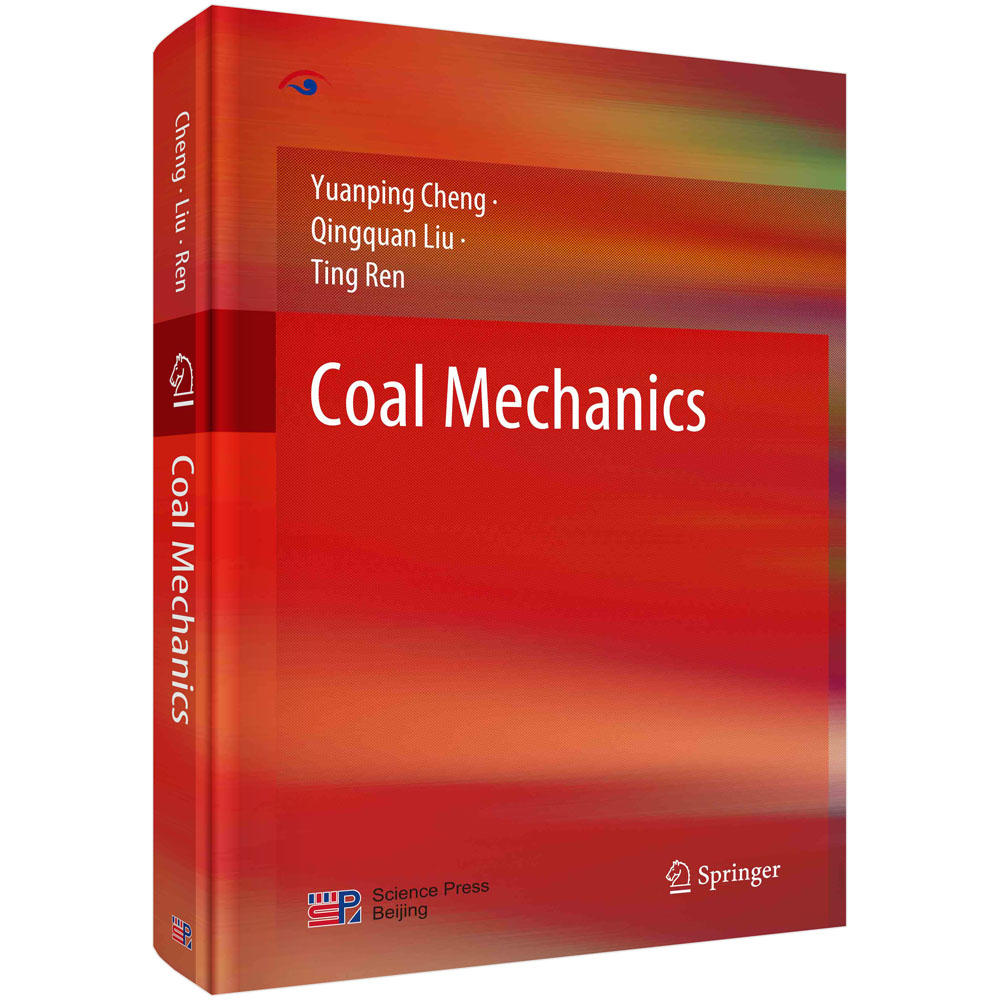
出版社: 科学
原售价: 299.00
折扣价: 236.21
折扣购买: 煤力学(英文版)
ISBN: 9787030691583

Chapter 1 Introduction
Learning outcomes
Coal formation, macroscopic composition of coal/rock, structure of coal, coal seam gas and coal measure strata;
Pore and fracture structures in coal, simplified physical models of coal and their significance in the study of coal mechanics;
Comparison of coal and rock structures, strength, adsorption properties and disasters.
1.1 Coal and Coal Measure Strata
1.1.1 Coal and Coal Seam Gas
1. Coal formation
Coal is one type of solid-state combustible organic rocks, which is transformed from plant remains by complex biochemistry, physical chemistry and geochemistry effects (also known as the coal-forming process). Coal is mainly composed of organic matter and a small amount of inorganic minerals. The organic matter in coal is mainly composed of five elements, namely carbon, hydrogen, oxygen, nitrogen and organic sulfur, of which the carbon, hydrogen and oxygen contents constitute more than 95% of the total organic matter. Generally, it is believed that coal is made up of large aromatic rings and fused rings with fat side chains, and the skeletons of these rings are made of carbon elements. With the increasing coal rank, the content of carbon increases while the content of hydrogen and oxygen decreases, and the content of nitrogen slightly reduces. In China, the carbon content is 55%-62% for peat (on dry and ash-free basis), 60%-76.5% for lignite, 77%-92.7% for bituminous coal, and for anthracite coal, carbon is usually above 89%. The inorganic matter in coal is mainly composed of water and minerals [1].
The coal-forming process can be divided into two stages. The first stage is peatification or saprofication, which mainly occurs in the peat swamps, lakes and shallow seas that are located on the earth’s surface. In this stage, driven by the biogeochemical effects and under the action of various microorganisms, the remains of plants continuously decompose, combine and accumulate, resulting in the lower plants turning to sapropel while the higher plants form peat. The second stage of the coal-forming process is the stage of coalification. In this stage, the peat or sapropel formed in the previous stage is buried deep underground due to the subsidence of the earth’s crust. The increase of ground temperature as well as pressure convert the coal-forming process from peatification/saprofication into physi-chemical reactions (namely the coalification). Moreover, coalification can be further divided into diagenesis and metamorphism, of which the transformation process from peat to young lignite is called diagenesis and the transformation process from young lignite to old lignite, bituminite coal even anthracite is called metamorphism.
In China, from the early Palaeozoic stone coal (belongs to the sapropelite) to the Quaternary peat, there exist 14 coal forming periods, of which the most important coal forming periods are: ① early Carboniferous in South China; ② Carboniferous-Permian in North China; ③ Permian in South China; ④ late Triassic in South China; ⑤ early and middle Jurassic in Northwest China; ⑥ late Jurassic to early Cretaceous in Northeast China; ⑦ Tertiary period in Northeast/Southwest/Coastal China. Statistics indicate that the reserves of the early and middle Jurassic coal forming periods contribute for 60% of China's total coal resources, and the reserves of the Carboniferous-Permian coal forming period in North China contribute for 26% of China's total coal resources.
2. Macroscopic composition of coal
The macroscopic composition of coal is the basic unit of coal that can be distinguished by naked eyes, including vitrain, bright coal, dull coal and fusain, of which vitrain and fusain are the simple composition of coal while the bright coal and dull coal are the complex composition of coal [1].
Vitrain is transformed from plants’ lignocellulosic tissue through the effect of gelatinization. The microstructure of vitrain is relatively simple, and it is one of the simple macroscopic compositions of coal. The color of vitrain is dark and shiny. Vitrain is also the darkest and the most lustrous element in coal. It has a pure texture, a uniform structure, a shell-like fracture and a internal fissure. The vitrain is brittle in texture and easy to break into angular pieces. In coal seams, vitrain always shapes as convex lens or ribbon, with a thickness ranging from several to 20 mm, and sometimes it also exists in bright coal and dull coal in a lineation form.
Fusain is transformed from plants’ woody fibrous tissue which slowly oxidized in a water shortage oxygen-enriched environment or formed due to forest fires. Fusain is also one of the simple macroscopic compositions of coal. Due to the large porosity and strong ability of oxygen adsorption, the coal seams that are rich in fusain will easily be prone to spontaneous combustion. The appearance of fusain is similar to charcoal, with gray color and obv